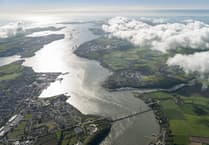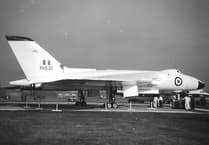South Pembrokeshire’s Chapel Bay Fort and Museum - the earliest known fort in the world constructed principally in mass concrete - has launched its fourth exciting season, with many improvements and new additions.
Last year, this gem of military history on the Coast Path at Angle opened its main underground magazine to the public. Now, visitors will also be able to see the magazine’s new shell bench, which has been constructed by volunteers with funding from the fort’s near neighbour, the Valero oil refinery.
The shell bench illustrates how 200 one hundredweight six-inch shells would have been stored ready to serve two of the fort’s three breech loading naval guns used by the Army for coastal defence.
Visitors to the magazine will also see the shifting lobby - where uniforms were exchanged for magazine clothes - as well as the cartridge store and shell passage. The passage leads to two special lifts, which would have transported cartridges and projectiles up to the guns.
At sea, six-inch guns would have been part of the main armament of Royal Navy cruisers, such as the five launched at Pembroke Dockyard between 1913 and 1917.
Chapel Bay, a scheduled ancient monument, was completed in 1891 and is the youngest of the 12 Victorian forts built in the 19th century to defend the Milford Haven Waterway and the Royal Dockyard at Pembroke Dock.
The museum - a memorial to the men who served and trained there - explains military technology and weaponry through the ages with the aid of extensive labelling. A variety of displays feature artillery and associated tools and instruments, the First World War, bomb disposal and the Battle of Waterloo.
New displays for this season spotlight civilian and military gas masks from the Second World War to 2014, as well as a gas warning rattle; grenades and bayonets. The collection of artillery ranges from the 16th century to the Cold War, and includes specimens of ordnance, such as the 40mm Bofors and 3.7 inch anti-aircraft gun whichever were used in the defence of the Milford Haven Waterway.
The extensive display of small arms traces their development over three centuries, together with optical instruments, communications equipment, projectiles from the 14th century onwards, bombs and rockets.
A 10-inch rifled muzzle loading anti-submarine mortar used by Q-ships is also on display, recalling these mystery ships based at Milford Haven during the First World War. Bomb fragments found at Pembroke Dock by Griff and Colwyn Williams will revive memories of the German bombing raids on the town in the Second World War.
Visitors will be intrigued to see examples of Soviet weaponry, including the RPG-7 anti-tank missile launcher and rocket introduced in 1962 and which remains in widespread use among Third World military forces.
The Victorian coastal artillery fort is now open on Fridays, Saturdays and Sundays, as well as Bank Holiday Mondays, from 10 am to 4 pm, until the end of October. Visitors can drive direct to the fort, thanks to the new road and car park. The fort has disabled access.
Guided tours, which are included in the entry fee, are conducted by a dedicated team of volunteers and provide access to areas of the fort which are otherwise out of bounds to the public. As well as the museum, the tours take in underground works and tunnels, gun emplacements and magazines.
Refreshments are served at The Cookhouse café on the site, with free entry for visitors who do not wish to explore the fort.
Much of the fort’s success is down to its volunteers. But more volunteers, to help with its operation, maintenance and café, are always needed. Anyone who would like to be involved in the project should contact 07437 568654.
Visitors can contact the fort and museum by phone on 07437 568654; email [email protected]; visit the website at www.chapelbayfort.com or write to Chapel Bay Fort and Museum, Angle, Pembrokeshire, SA71 5BE.
Chapel Bay Fort is a registered charity and a company limited by guarantee. It was set up in 1995 with the long-term aim of opening the fort as an interpretation centre for the military history of Milford Haven and its environs.




